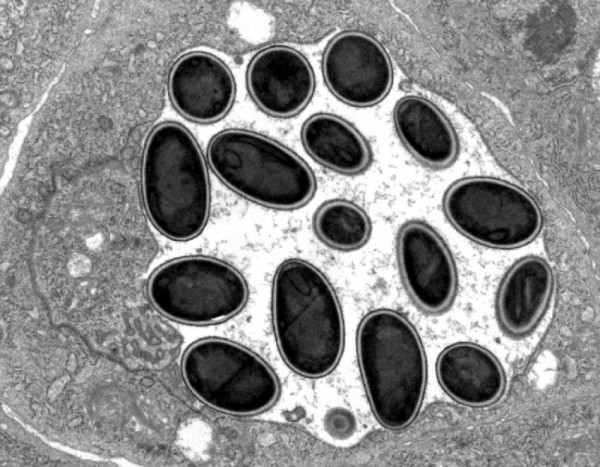Swiss Researchers Describe Evolution of Extreme Parasites
| Marc Maligalig | | Oct 14, 2014 08:00 PM EDT |
(Photo : Ronny Larsson)
Zoologists from the University of Basel in Switzerland have discovered Mitosporidium daphniae, a new species of parasite that illustrates the missing link between an extreme group of parasites and fungi, shedding light on the evolution of the disease-causing parasites in animals and humans.
Like Us on Facebook
Hosts are used by parasites to simplify their existence. In order to capitalize on another being, the parasites have developed features that are so extreme it is often unfeasible to trace. The research team, led by Professor Dieter Ebert from the Department of Environmental Science at the university has discovered the missing link that demonstrates how microsporidia, a large group of extreme parasites, have evolved.
The scientists were supported by researchers from the United States and Sweden.
Microsporidia are a big category of extreme parasites, with more than 1,200 known species, that enter animals and humans and cost great damage in agriculture and in health care systems. They live inside the cells of the host and have specialized features, such as having the smallest known genome of all organism with a nucleus, have no mitochondria of their own and being able to reproduce in the cells.
In addition, the class has developed the polar tube, its specialized infection apparatus, which they use to enter the host's cells.
The zoologists have been studying the evolution of microsporidia over the years, since the organisms have a high molecular evolution rate. When they found a new parasite a few years ago in water fleas, they were able to classify the new species as microsporidium, mostly because it had a unique harpoon-shaped infection apparatus. The apparatus was identified as its polar tube, one of the trademarks of microsporidium.
The team was also surprised by the complete analysis it did on the whole genome, with it resembling more of a fungus than a microsporidium. It also had a mitochondrial genome. The new species, now named Mitosporidium daphniae, thus bridges the gap between microsporidia and fungi.
TagsMicrosporidium, parasite, Missing link, Fungus, Fungi, Microsporidia, agriculture, health care
©2015 Chinatopix All rights reserved. Do not reproduce without permission
EDITOR'S PICKS
-

Did the Trump administration just announce plans for a trade war with ‘hostile’ China and Russia?
-

US Senate passes Taiwan travel bill slammed by China
-

As Yan Sihong’s family grieves, here are other Chinese students who went missing abroad. Some have never been found
-

Beijing blasts Western critics who ‘smear China’ with the term sharp power
-

China Envoy Seeks to Defuse Tensions With U.S. as a Trade War Brews
-

Singapore's Deputy PM Provides Bitcoin Vote of Confidence Amid China's Blanket Bans
-

China warns investors over risks in overseas virtual currency trading
-

Chinese government most trustworthy: survey
-

Kashima Antlers On Course For Back-To-Back Titles
MOST POPULAR
LATEST NEWS
Zhou Yongkang: China's Former Security Chief Sentenced to Life in Prison

China's former Chief of the Ministry of Public Security, Zhou Yongkang, has been given a life sentence after he was found guilty of abusing his office, bribery and deliberately ... Full Article
TRENDING STORY

China Pork Prices Expected to Stabilize As The Supplies Recover

Elephone P9000 Smartphone is now on Sale on Amazon India

There's a Big Chance Cliffhangers Won't Still Be Resolved When Grey's Anatomy Season 13 Returns

Supreme Court Ruled on Samsung vs Apple Dispute for Patent Infringement

Microsoft Surface Pro 5 Rumors and Release Date: What is the Latest?










